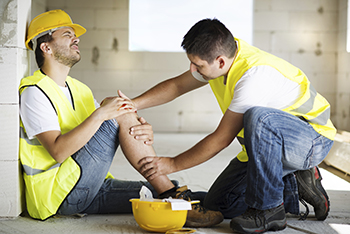 Accidents can happen and lead to injuries. When an accident is caused by someone or somebody outside your control, you have an option for legal recourse. Premises liability is a major issue in a slip or trip and fall accident claim.
Accidents can happen and lead to injuries. When an accident is caused by someone or somebody outside your control, you have an option for legal recourse. Premises liability is a major issue in a slip or trip and fall accident claim.
To win such a lawsuit, you need to prove that someone else (the property owner) is legally responsible for your injuries. As a result, you need a good and experienced personal injury attorney in Melbourne FL.
Premises liability can be defined as the legal responsibility that a property owner has for injuries caused by slip and fall accidents at their property. In general, a property owner may be held responsible for trips, slips and falls that occur due to water, poor lighting, ice and snow, sudden changes in flooring or a hidden hazard, among other causes.
To hold another party or person liable for injuries sustained from a slip/trip and fall accident, the injured person must prove one of the following issues:
- The property owner (business or individual) or his/her employee must have recognized or known the presence of a dangerous condition (such as slippery floor, pothole or uneven walking surface) but failed to repair or remove the potential hazard. The major question here is whether the responsible party would or had identified the hazard, and whether the defendant had sufficient time and opportunity to solve the situation prior to the accident happening.
- The owner of the property or his/her employee was the actual cause of the hazardous situation that led to the slip and fall accident. For instance, the property owner or their employee may have left a dangerous obstacle on a walking path on the property and it was reasonably probable that somebody could get an injury due to the hazardous situation.
Proving Liability and Negligence
The term “reasonable” appears numerous times in slip and fall lawsuits. This is due to the fact that, for a party (business or individual) to be considered negligent and thus liable for damages in such a lawsuit, the owner of the property (his/her employee or agent) ought to have failed to take action as a reasonable rational person would have done under similar situations that caused the accident. To assess or determine whether a party acted reasonably, a plaintiff should consider the following factors:
- Did the situation exist long enough that a reasonable person could have acted to do away with the hazard?
- Did the defendant have a safety policy on the property, and if so, were there any records to show that they policy was applied before the accident occurred?
- Was the defendant justified to create the potentially hazardous situation or obstacle, and if so, did this justification exist at the time of the accident?
- Could the defendant make the hazard less dangerous by taking preventive measures such as placing a warning signage, relocating the hazard or preventing access to that particular place?
- Did limited visibility or poor lighting contribute in causing the accident?
A defendant may argue that the plaintiff was totally or partially responsible for the accident, a legal concept known as comparative fault, contributory negligence or comparative negligence. This concept can significantly affect the ability of the plaintiff to get compensation or the compensation may be reduced by a percentage equal to his/her share of responsibility/liability.
If the defense can prove that the plaintiff ignored warning signs or accessed an area without lawful access or the plaintiff did not notice the hazard because they were doing another activity (such as texting or talking on a phone), then winning the injury claim is very unlikely. Winning a slip and fall lawsuit requires an experienced personal injury attorney — and that’s exactly what you get with Nance Cacciatore.
